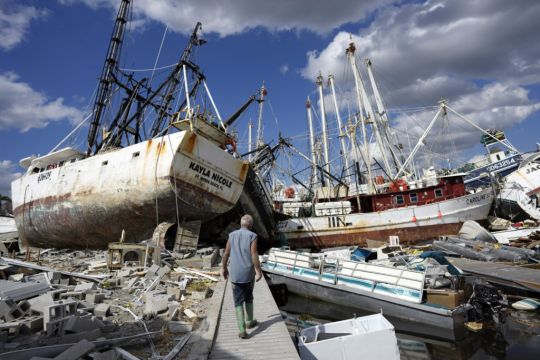The death toll from Hurricane Ian climbed into the triple digits on Thursday.
The number of recorded storm-related deaths has risen to at least 101 in the eight days since the storm made landfall in south-west Florida.
Of the total deaths, 92 were in Florida, according to reports from the Florida Medical Examiners Commission.
Other storm deaths include five in North Carolina, three in Cuba and one in Virginia.

Ian made landfall in Florida’s Gulf Coast on September 28, after hitting Cuba the previous day.
Roaring north-east, the storm crossed Florida and headed into the Atlantic, then made another landfall in South Carolina before pushing into the mid-Atlantic states.
Ian is the second-deadliest storm to hit the mainland United States in the 21st century, behind Hurricane Katrina, which left about 1,800 people dead in 2005.
The deadliest hurricane to hit the US was the Great Galveston Hurricane in 1900 that killed as many as 8,000 people.

Ian, a Category 4 storm with sustained winds of 150 miles per hour, unleashed torrents of rain and caused extensive flooding and damage.
The deluge turned streets into gushing rivers, backyard waterways overflowed into neighbourhoods sometimes by more than a dozen feet and boats were thrown into yards and onto roads.
Beaches disappeared as ocean surges pushed shorelines far inland.
President Joe Biden toured some of Florida’s hurricane-hit areas on Wednesday, surveying damage by helicopter and then walking on foot alongside governor Ron DeSantis.
The Democratic president and Republican governor pledged to put political rivalries aside to help rebuild homes, businesses and lives.
Mr Biden emphasised at a briefing with local officials that the effort could take years.







